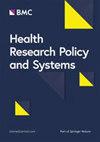家庭外部门减盐政策:马来西亚 2021-2025 年预防和控制非传染性疾病(NCDS)减盐战略补充文件
IF 3.6
2区 医学
Q1 HEALTH POLICY & SERVICES
引用次数: 0
摘要
心血管疾病(CVDs)是马来西亚人死亡的主要原因。减少居民的食盐摄入量是预防心血管疾病最具成本效益的策略之一。该策略非常可行,因为其实施成本较低,却能对健康产生积极影响。因此,自 2010 年以来,减少食盐摄入量的倡议已经启动,并推出了两个系列的战略。然而,在针对目标受众的实施和推广方面还存在一些问题。此外,针对家庭以外部门的战略也有待加强。我们最近对政策制定者、食品行业、食品经营者、消费者和学校等各利益相关方对减盐的看法、障碍和促进因素进行了调查,结果显示,在户外进食是导致高盐摄入量的原因之一。在户外出售的食品一般都含有大量的盐。因此,本补充文件旨在加强《2021-2025 年马来西亚预防和控制非传染性疾病(NCDs)减盐战略》,重点关注家庭外部门的战略。在这份补充文件中,采用了卫生部(MOH)正在使用的监测、宣传和产品(M-A-P)战略,并确定了行动计划大纲和指标,以确保目标的实现。这些战略将涉及跨部门和多学科方法,包括监测盐的摄入量和教育消费者,加强目前有关盐/钠标签的立法执行工作,以及促进有关重新配方的研究。本补充文件中的其他战略包括通过提出 14 类食品的最高含盐量目标来重新制定配方。希望这份补充文件能够加强当前的《2021-2025 年马来西亚预防和控制非传染性疾病的减盐战略》,特别是针对家庭以外的部门,以实现到 2025 年将人口的平均盐摄入量降至每天 6.0 克的目标。本文章由计算机程序翻译,如有差异,请以英文原文为准。
Salt reduction policy for out of home sectors: a supplementary document for the salt reduction strategy to prevent and control non-communicable diseases (NCDS) in Malaysia 2021–2025
Cardiovascular diseases (CVDs) are the major cause of death among Malaysians. Reduction of salt intake in populations is one of the most cost-effective strategies in the prevention of CVDs. It is very feasible as it requires low cost for implementation and yet could produce a positive impact on health. Thus, salt reduction initiatives have been initiated since 2010, and two series of strategies have been launched. However, there are issues on its delivery and outreach to the target audience. Further, strategies targeting out of home sectors are yet to be emphasized. Our recent findings on the perceptions, barriers and enablers towards salt reduction among various stakeholders including policy-makers, food industries, food operators, consumers and schools showed that eating outside of the home contributed to high salt intake. Foods sold outside the home generally contain a high amount of salt. Thus, this supplementary document is being proposed to strengthen the Salt Reduction Strategy to Prevent and Control Non-communicable Diseases (NCDs) for Malaysia 2021–2025 by focussing on the strategy for the out-of-home sectors. In this supplementary document, the Monitoring, Awareness and Product (M-A-P) strategies being used by the Ministry of Health (MOH) are adopted with a defined outline of the plan of action and indicators to ensure that targets could be achieved. The strategies will involve inter-sectoral and multi-disciplinary approaches, including monitoring of salt intake and educating consumers, strengthening the current enforcement of legislation on salt/sodium labelling and promoting research on reformulation. Other strategies included in this supplementary document included reformulation through proposing maximum salt targets for 14 food categories. It is hoped that this supplementary document could strengthen the current the Salt Reduction Strategy to Prevent and Control NCDs for Malaysia 2021–2025 particularly, for the out-of-home sector, to achieve a reduction in mean salt intake of the population to 6.0 g per day by 2025.
求助全文
通过发布文献求助,成功后即可免费获取论文全文。
去求助
来源期刊

Health Research Policy and Systems
HEALTH POLICY & SERVICES-
CiteScore
7.50
自引率
7.50%
发文量
124
审稿时长
27 weeks
期刊介绍:
Health Research Policy and Systems is an Open Access, peer-reviewed, online journal that aims to provide a platform for the global research community to share their views, findings, insights and successes. Health Research Policy and Systems considers manuscripts that investigate the role of evidence-based health policy and health research systems in ensuring the efficient utilization and application of knowledge to improve health and health equity, especially in developing countries. Research is the foundation for improvements in public health. The problem is that people involved in different areas of research, together with managers and administrators in charge of research entities, do not communicate sufficiently with each other.
 求助内容:
求助内容: 应助结果提醒方式:
应助结果提醒方式:


